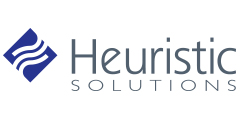Over the last 15 years, we’ve implemented dozens of unique credential management systems. This experience has shown us the need for configurable, role-based permissions. Different people in your organization handle various aspects of your program. Once you add third-party reviewers, supervisors, employers, and education providers to your program ecosystem, it is clear that not all participants need the same level of system access.
Credential management programs, whether large or small, require platforms with flexible visibility and access for different users. We designed LearningBuilder’s permissions to ensure clarity, usability, and security for all.
Roles: How We Assign Access and Actions in LearningBuilder
You wouldn’t want your practitioners to have report design permissions, and you wouldn’t want your course providers to see everything a system administrator would. Even within your organization, there may be areas you want to keep separate by staff seniority or responsibilities. You need a way to define what your users can see and do in the system.
In LearningBuilder, areas of visibility and access are determined by what we call “roles.” Each system participant, or member, is assigned one or more roles. Each role is associated with specific tasks in the system. For example:
- The Practitioner role can be used for an end user who works in the system to obtain a credential.
- The Administrator role is for someone (usually client staff) who manages the LearningBuilder configuration itself.
- The Provider Role is for users who create and manage courses, conferences, etc.
- The Reviewer Role is for users responsible for processing applications, approving credentials, etc.
Within LearningBuilder, a wide variety of options for access and action can be associated with distinct roles. We’ll work with you to define the permissions for each role and set them using our matrix-based tool. Roles can also stack within the system, so someone with the roles of, say, Reviewer and Auditor will also have permissions for both.
LearningBuilder’s permissions are highly configurable, which helps take the headache out of staff and role changes. For example, a staff member might need to step out of the system for an extended period. Perhaps someone goes on leave, and their second-in-command temporarily takes on some extra responsibilities. With LearningBuilder, it takes just a few clicks to grant or revoke a role with its associated permissions.
Acting on Behalf of Others: The Responsible Party Area
Within a credentialing program and its larger ecosystem, the relationship between an organization and an individual can take multiple forms. For example:
- Licensing jurisdictions and licensees;
- CE providers and learners;
- Employers and their employees;
- Academic program administrators and students, and
- Supervisors and supervisees in a clinical practice setting.
In these cases, individual system users may need to take action as their organization for affiliated individuals’ applications. That’s where LearningBuilder’s Responsible Party Area comes in.
A supervisor would use the Responsible Party Area to approve practice hours for applicants or practitioners. The applicant indicates their supervisor using a pick list during the registration or application process. When that supervisor accepts the request, it creates a relationship between the two. Then, the supervisor can log in to view and approve supervision or clinical hours on behalf of their supervisees.
Employers can also use the Responsible Party Area to log in and complete bulk payments on behalf of their employees. That way, nobody has to deal with the reimbursement process. Employers and employees are related in the system, and employers can view and take action on all pending payments for renewal fees, exam fees, or retake fees.
Report Permissions: Data Made Discreet
Of course, not all reports are meant for all eyes. You don’t want to expose your program metrics to the wrong people. Thus, LearningBuilder’s reporting tools include configurable permissions to control which system users can design and view reports. Some roles may have viewing access without design access.
With LearningBuilder’s Enhanced Reporting, permissions can even be granted at multiple levels: Some users may be granted access to see application reports, while others may be granted access to see financial reports.
LearningBuilder: Designed with Credential Processes in Mind
At Heuristics, we understand permissions because we understand credential management. LearningBuilder isn’t a workaround or a compromise; it’s best-in-class software for every aspect of your credential program, from registration and eligibility to conferral— and beyond. If you’re ready to get started on a new solution, please click here to schedule a discovery call.




